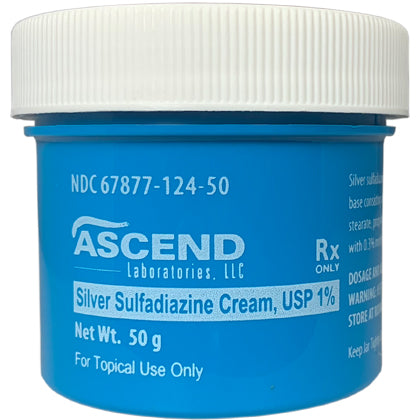

However, if individual patient requirements make dressings necessary, they may be used. Administration may be accomplished in minimal time because dressings are not required. Whenever necessary, the cream should be reapplied to any areas from which it has been removed by patient activity. The cream should be applied once to twice daily to a thickness of approximately 1/16 inch. The burn areas should be covered with SILVADENE Cream 1% at all times. The burn wounds are then cleansed and debrided, and SILVADENE Cream 1% (silver sulfadiazine) is applied under sterile conditions. Prompt institution of appropriate regimens for care of the burned patient is of prime importance and includes the control of shock and pain. However, reduction in bacterial colonization has caused delayed separation, in some cases necessitating escharotomy in order to prevent contracture.
#Silver sulfadiazine cream full#
Reduction in bacterial growth after application of topical antibacterial agents has been reported to permit spontaneous healing of deep partial-thickness burns by preventing conversion of the partial thickness to full thickness by sepsis.
#Silver sulfadiazine cream skin#
Other infrequently occurring events include skin necrosis, erythema multiforme, skin discoloration, burning sensation, rashes, and interstitial nephritis. An increased incidence of leukopenia has been reported in patients treated concurrently with cimetidine. Recovery is not influenced by continuation of silver sulfadiazine therapy. Rebound to normal leukocyte levels follows onset within 2 to 3 days.

Maximal white blood cell depression occurs within 2 to 4 days of initiation of therapy. 1,2,3 Leukopenia associated with silver sulfadiazine administration is primarily characterized by decreased neutrophil count. Several cases of transient leukopenia have been reported in patients receiving silver sulfadiazine therapy.

The use of SILVADENE Cream 1% (silver sulfadiazine) in some cases of glucose-6-phosphate dehydrogenase-deficient individuals may be hazardous, as hemolysis may occur. However, the incidence of clinically reported fungal superinfection is low. If allergic reactions attributable to treatment with silver sulfadiazine occur, continuation of therapy must be weighed against the potential hazards of the particular allergic reaction.įungal proliferation in and below the eschar may occur. There is potential cross-sensitivity between silver sulfadiazine and other sulfonamides. Some of the reactions, which have been associated with sulfonamides, are as follows: blood dyscrasias including agranulocytosis, aplastic anemia, thrombocytopenia, leukopenia, and hemolytic anemia dermatologic and allergic reactions, including life-threatening cutaneous reactions gastrointestinal reactions hepatitis and hepatocellular necrosis CNS reactions and toxic nephrosis. Although few have been reported, it is possible that any adverse reaction associated with sulfonamides may occur. Silver sulfadiazine is not a carbonic anhydrase inhibitor and may be useful in situations where such agents are contraindicated.Ībsorption of silver sulfadiazine varies depending upon the percent of body surface area and the extent of the tissue damage. Results of In Vitro Testing with SILVADENE ® Cream 1% (silver sulfadiazine) Concentration of Silver Sulfadiazine Number of Sensitive Strains/Total Number of Strains Tested Genus & Species


 0 kommentar(er)
0 kommentar(er)
